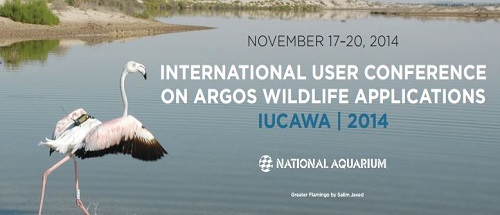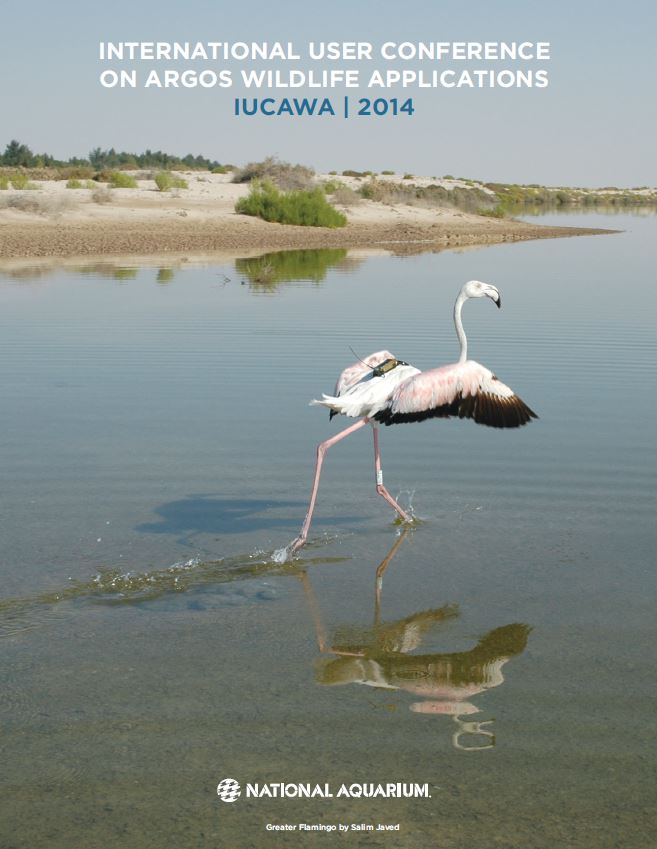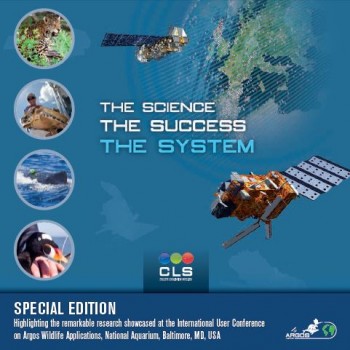← Back
Conference notes of the IUCAWA 2014 on November, 18th

The great diversity of research and conservation science accomplished with Argos was applauded by the administrators, and all expressed their commitment to the continuity of the Argos system.
Jean-Yves Legall, President of the French Space Agency, insisted that the future of the Argos system is a top priority for CNES. Indeed, CNES is already working hard on the next generation of Argos instruments, Argos-4.
Marc Cohen, EUMETSAT, explained that an Argos-4 payload will be embarked on the EUMETSAT mid-morning orbit until 2035.
Mangesh Sannala, the Space Counselor at the Indian Embassy in Washington, DC, also expressed India’s commitment to the Argos system.
Francisco Werner, Science and Research Director, NOAA Fisheries Management Services Southwest Fisheries Science Center, focused on NOAA as the single greatest Argos user in the world, with over 10,000 registered Argos platforms.
Users reporting from around the world including Mexico, Switzerland, the Cook Islands, New Zealand, the United States and Canada, presented their work using Argos on top pelagic predators (such as tuna,…), Amur Falcon, loggerhead turtles, bar-tailed godwits, Antillean manatees, Florida manatees, owls, humpback whales, hawksbill turtles, small cetaceans (franciscanas, dolphins) and pacific barrow’s goldeneyes, attesting to the great diversity of species studies with the Argos system.
“The success of Argos is an achievement CNES is very proud of. It is the longest ongoing partnership between France and the United States in Space.” Jean-Yves Legall, President of the French Space Agency
“The Argos generation – those people who were born after the Argos system was operational who are doing fantastic research and conservation work with the system. Many of you are present here.” Wallace J. Nichols
“Argos is the key to seeing what’s inside the “black box” – before Argos, scientists only knew where their animals were at the end points. Thanks to Argos they know what happens between those points.” Wallace J. Nichols
Highlights of the day
Did you know that the Bar-tailed godwit, a small bird, is the world’s most remarkable endurance athlete, as revealed by Argos and a team of scientists at the USGS Alaska Science Center ?
Dave Douglas presented the work of his colleagues tracking E7, the bar-tailed godwit, who flew from Alaska to New Zealand, a total of 11,570 km, in 9 days, without stopping. Before the scientists from USGS tracked E7, it was thought that only aircraft could fly such great distances non-stop.
For more information :
http://www.usgs.gov/newsroom/article.asp?ID=1774#.VGut8fmG-2o
http://alaska.usgs.gov/science/biology/shorebirds/barg_photos.php


